
SACLA was the first National Critical Technology project to be completed, based on a bringing together of various technologies developed in Japan. It will clearly contribute to the development of new technologies. SACLA's novel light will lead us to resolve many unknown issues in areas such as science, technology, and industry, by helping us to understand the structure and function at the atomic level. In building SACLA, a vast number of technologies and materials were used whose value has not previously been widely appreciated, and this gave them new meaning. At the same time, by gaining further understanding of atomic-level structures and functions, SACLA will enable us to shine light on phenomena that previously we only partially understood, thus giving rise to new science and technology. With SACLA, we have a new technological infrastructure allowing greater value to be created from minimal inputs of resources and energy. These new technologies will also allow SACLA to develop further, leading to the creation of new technology. We pursue our work with the conviction that SACLA will help us to create revolutionary new technologies and industries like nothing we could have imagined.
The light waves emitted by SACLA can be made even purer, and their brilliance can be increased by several orders of magnitude, by using weak pulses of light known as “seed light.” This system will be developed through a combination of leading edge accelerator and laser technology.
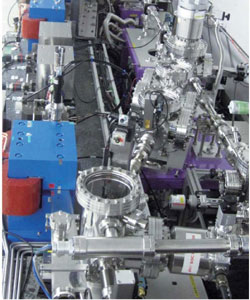
The fact that XFEL can be used in combination with SPring-8, a synchrotron facility, makes it unique among facilities of its kind around the world. This combination promises to enable observation of the atomic world at femtosecond speed.
![]()
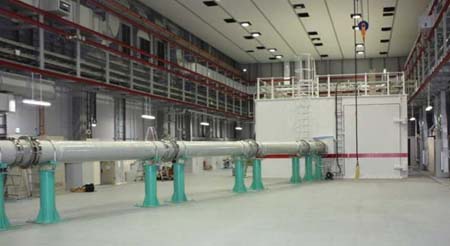
![]()
SACLA’s data analysis system allows high-speed storage and analysis of large volumes of data from its detectors (left). More refined analysis can be done using the K computer in Kobe. Large-volume analysis is thus possible through the combination of these two world-class facilities.
![]()
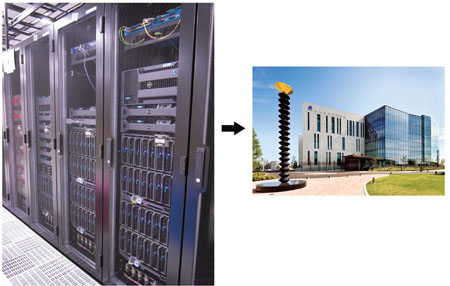
![]()
Analyzing protein structure |
|
| The light emitted from the XFEL is so brilliant and high in quality, it enables us to image the structure of complex proteins. | |
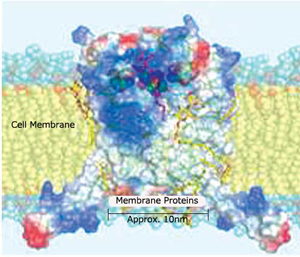 |
Membrane proteins regulate the passage of substances in and out of cells. The majority of drugs used today function by acting upon membrane proteins. |
Biological nanomachines |
|
Minuscule nanoscale machines in the body play an important role in biological functions. XFEL lasers can be used to investigate the behavior of these machines and to develop drugs and nanomaterials that are safe and environment-friendly. | |
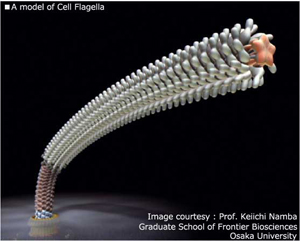 |
Certain cells move through water by rotating a tail-like structure called a flagellum. Flagella are biological macromolecular motors built from over 30 different proteins, and understanding their function will help in the development of nanomachines. |
Imaging high-speed phenomena |
|
Using pulses of light from SACLA lasting less than 100 femtoseconds, it is possible to
observe the rapid movements of electrons and atoms, which play the major role in
chemical reactions and adsorption reactions in matter. | |
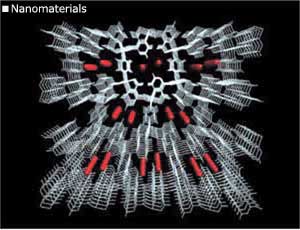 |
The picture on the left shows the structure of an artificial material that has absorbed oxygen gas. The red shows oxygen molecules, indicating that it is absorbed in regular patterns. |
Cellular biology |
|
There are still many things that we do not understand about the structure of the cell. With SACLA, we will be able to peer into living cells at the atomic level, in real time, to see how they really function. | |
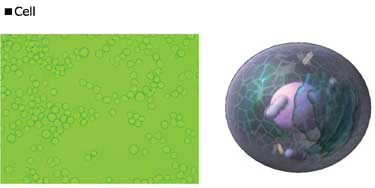 |
Creating extreme states |
|
Using the extremely brilliant light emitted by SACLA will make it possible to recreate the extremely energetic reactions that take place in outer space, and to delve into the phenomenon of “vacuum decay,” where pairs of particles and antiparticles are generated from the vacuum. | |
 |
When extremely massive stars become supernovae, a variety of elements are created from the extremely high temperature and pressure. |
